Game Plan Spread
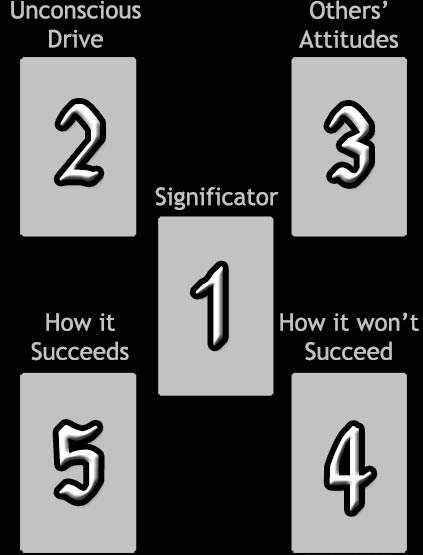
Difficulty: Easy
When a person has a certain plan in mind, this simple five-card spread presents a choice, hinting at what action or attitude should be taken for their plan to succeed, and what should be avoided to help the plan work out for the best.
The initial card is laid in the centre of the layout, the significator. The following four cards are laid out clockwise around the significator.
In this spread, the second card is about what drives the reader, but also says they are not fully conscious of this, perhaps even completely unaware of it. It provides a hint as to the reason they strive for their goal.
The third card uncovers what others think of the reader and their goals. The reader may or may not be aware of this. Sometimes other people factor into the plans (and sometimes they don't).
The fourth card suggests what not to do. If things are permitted to go down this path, the plan will collapse.
The fifth card is a hint as to how to make this plan work out favourably. The idea this card presents should be followed to make the plan successful. It is the differences between Cards #4 & #5 that should be noted, as the differences provide important clues.
Your Game Plan Reading
Unconscious Drive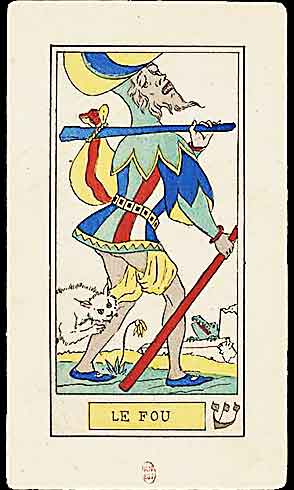 0 – The Fool |
External Influences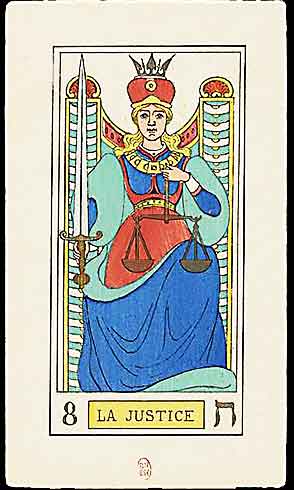 VIII – Justice |
|
Significator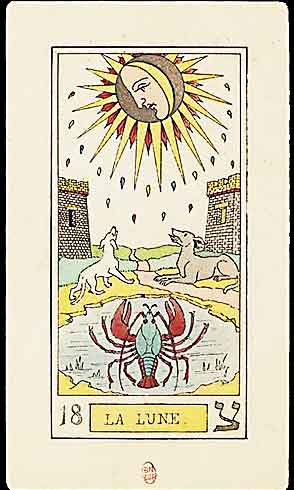 XVIII – The Moon |
||
How it Will Succeed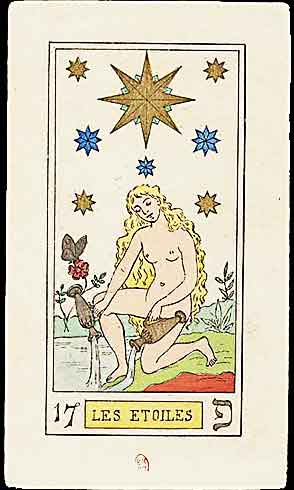 XVII – The Star |
How it Will Not Succeed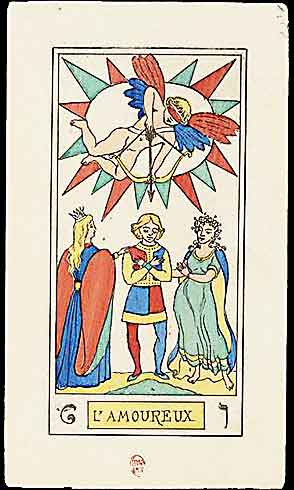 VI – The Lovers |

XVIII – The Moon
The Moon signifies illusion, intuition, and the subconscious mind. It represents the mystery of the unknown, hidden fears, and the need to trust inner guidance while navigating uncertainty.
Symbolism: The Moon is depicted with two dogs howling at the moon, symbolising the pull of primal instincts. A crayfish crawls from the water, representing the subconscious emerging into consciousness. The path leads towards a distant horizon, symbolising the journey through confusion to clarity.
In Relationships: Illusions in relationships, emotional confusion, or hidden feelings. Trust your intuition to navigate these uncertain waters.
In Work: Uncertainty or the need to trust your instincts. Hidden factors may influence the situation.
Spiritually: A time to confront fears, listen to your inner voice, and seek clarity in moments of doubt.
When ill-dignified: Deception, illusion, or being misled by false hopes or unclear situations.

0 – The Fool
The Fool represents freedom, spontaneity, and new beginnings. This card signifies the start of an adventurous journey, full of potential but also uncertainty. He reminds us to embrace the unknown with optimism and an open heart.
Symbolism: The Fool carries a staff and a small sack, symbolising untapped potential and the lessons to be learned. The playful animal at his feet represents instinct, loyalty, and sometimes, the forces that pull us in conflicting directions. His carefree attitude invites a leap into the unknown.
In Relationships: New romantic beginnings, playfulness, and spontaneity, but be wary of impulsive actions.
In Work: A time for exploration, openness to unconventional opportunities, and embracing the unfamiliar.
Spiritually: Embarking on a journey of self-discovery, embracing the unknown with faith.
When ill-dignified: Recklessness, lack of foresight, and the dangers of ignoring consequences.

VIII – Justice
Justice represents balance, fairness, and accountability. This card calls for the resolution of disputes and alignment with truth and fairness in all areas of life.
Symbolism: Justice sits with a sword in one hand and scales in the other, symbolising impartiality, truth, and balance. Her crown and steady gaze emphasise her authority over matters of fairness.
In Relationships: A balanced relationship or the need to resolve unresolved issues with fairness and integrity.
In Work: Legal matters, contracts, or decisions that require careful evaluation.
Spiritually: A reminder to live truthfully, aligning actions with higher principles.
When ill-dignified: Dishonesty, imbalance, or the refusal to accept responsibility for one's actions.

VI – The Lovers
The Lovers represents choice, duality, and the connections that shape our lives. This card often signals a critical decision between love and duty, passion and responsibility.
Symbolism: A young man stands between two women, representing virtue and temptation, while a winged figure above aims a bow and arrow, guiding his choice. The lush background reflects the complexity and growth that relationships bring.
In Relationships: Choices in relationships, including romantic triangles, commitment, or the deepening of bonds.
In Work: A crossroads where personal values must be aligned with career decisions.
Spiritually: A call to balance inner conflicts and unite dualities in the quest for harmony.
When ill-dignified: Indecision, infidelity, or superficiality in relationships.

XVII – The Star
The Star represents hope, inspiration, and divine guidance. This card signifies moments of clarity, healing, and the connection to higher aspirations.
Symbolism: The Star is a nude woman pouring water onto the ground and into a pool, symbolising the flow of spiritual energy. A star shines brightly above her, representing guidance and inspiration. The peaceful, open landscape conveys hope and renewal.
In Relationships: A time of healing, hope, and emotional renewal. This card suggests trust and faith in the potential for deep connection.
In Work: Inspiration, new opportunities, and alignment with your true calling.
Spiritually: A period of spiritual renewal, where divine guidance leads the way towards greater fulfilment.
When ill-dignified: Hopelessness, lack of faith, or feeling disconnected from one's spiritual path.